Experimental Study on In Situ Storage of Grease-Lubricated Ball Screws
Abstract
:1. Introduction
2. Test Scheme Design
2.1. Storage Conditions for Ball Screws
2.2. Performance Testing of Lubricating Grease
2.3. Performance Testing of Ball Screw Transmission
- (1)
- Transmission efficiency and friction torque testing
- (2)
- Temperature rise testing
3. Test Results and Analysis
3.1. Changes in the Performance of Lubricating Grease before and after In-Situ Storage
- (1)
- Appearance
- (2)
- SEM Testing
- (3)
- FTIR Testing
- (4)
- Rheological Testing
- (5)
- PDSC Testing
- (6)
- SRV Testing
3.2. Influence of Deterioration of Lubricating Greases on the Transmission Performance of the Ball Screw
- (1)
- Transmission efficiency testing
- (2)
- Friction torque testing
- (3)
- Temperature rise testing
4. Conclusions
- (1)
- There are two main reasons for the failure of the lubricating grease studied in this article during storage. Firstly, the base oil in the lubricating grease contains ester oil, which is easily degraded by bacteria in the environment; on the other hand, there is a loss of the base oil during storage. Both reduce the effective lubricating components and lead to a decrease in lubrication performance. Based on the above analysis, it can be seen that after eight years of in situ storage, lubricating grease underwent continuous oxidation reactions in the temperature and humidity environment of our research institute, resulting in a decrease in various performance indicators.
- (2)
- The degradation of lubricating grease not only significantly reduces the transmission efficiency and friction torque of the ball screws, increasing the risk of wear and jamming of the ball screws, but also leads to a decrease in the heat dissipation capacity of the ball screw pair, which cannot maintain the normal working temperature of the screw, resulting in damage to the screws caused by overheating. Therefore, the degradation of lubricating grease has a significant impact on the operation and lifespan of ball screws.
- (3)
- The performance degradation results of lubricating grease after 8 years of in situ storage can provide an understanding of the failure mechanisms and failure modes of accelerated storage tests. A comparative test was conducted on the performance of the transmission mechanism in a degraded state (8-year in situ storage) and a normal state. The results showed that 8-year storage could cause changes in transmission efficiency and temperature rises but would not lead to a significant decrease in performance. Generally, unopened lubricating grease can be stored for about 5 years, while perfluoropolyether-based lubricating grease can be stored for 10 years or even longer. Lubricating grease should be sealed and stored. If conditions permit, it can be sealed with nitrogen gas and stored in a cool, dry, and ventilated environment. Lubricating grease packaging should be used as soon as possible after opening, and the use of small packaging is encouraged. Keeping the surface flat after using lubricating grease can reduce oil separation during storage and help extend the shelf life.
- (4)
- These performance changes in lubricating grease provide an experimental basis for the ball screw lubrication scheme. Synthetic lubricating grease with the slow degradation and volatilization rates of base oil, the slow consumption rate of antioxidants, and the strong antioxidant ability of thickeners needs further research and trial production. Through methods such as comparison, investigation, and composition compounding, key technologies for improving the storage stability of main components, such as base oils and thickeners, should be broken through, thereby improving the stability of lubricating grease and extending its storage life.
- (5)
- The results of the storage simulation test have significance in guiding the accelerated storage test design of lubricating grease. Based on the test results of this article, the rheological property detection results should be considered as the data basis for the accelerated degradation model, the oxidation induction period in the later stage of degradation as the modeling basis, and other indicators to explain the degradation mechanism from a microscopic perspective.
Author Contributions
Funding
Institutional Review Board Statement
Informed Consent Statement
Data Availability Statement
Conflicts of Interest
References
- Liu, D.J.; Sun, H.W.; Pan, Z.; Duan, Q.H. Two nano-nitride as a thickener grease trial research and performance evaluatio. ACTA Pet. Sin. (Pet. Process. Sect.) 2011, 27, 28–33. [Google Scholar]
- Zhao, G.Q.; Zhang, S.X.; Wang, X.B.; Liu, W.M. The relationships of thickener structures and properties of polyurea grease. Lubr. Eng. 2012, 37, 5–9. [Google Scholar]
- Xie, F.; Liu, R.; Hu, J.Q. Stabilities of lubricating grease. Synth. Lubr. 2006, 33, 33–37. [Google Scholar]
- Ouyang, P.; Xing, X.C.; Zhang, X.M.; Chen, L.; Liu, X.B.; Xia, B.J. Advances in oil antioxidant. Appl. Chem. Ind. 2016, 45, 538–541. [Google Scholar]
- Rhee, I.S. Decomposition Kinetic of Greases by Thermal Analysis. Tacom Research; Development and Engineering Center: Warren, MI, USA, 2007. [Google Scholar]
- Kuerten, D.; Winzer, N.; Kailer, A.; Pfeiffer, W.; Spallek, R.; Scherge, M. In-situ detection of hydrogen evolution in a lubricated sliding pin on disk test under high vacuum. Tribol. Int. 2016, 93, 324–331. [Google Scholar] [CrossRef]
- Naga, H.; Salem, A. Effect of worn metals on the oxidation of lubricating oils. Wear 1984, 96, 267–283. [Google Scholar] [CrossRef]
- Colclough, T. Role of additives and transition metals in lubricating oil oxidation. Ind. Eng. Chem. Res. 1987, 26, 1888–1895. [Google Scholar] [CrossRef]
- Liu, J.F.; Jin, Y.L.; Xiang, Y.L.; Qian, X.Z. Thermal oxidative and hydrolytic stability of the synthetic ester base oils. Lubr. Eng. 2014, 39, 56–61. [Google Scholar]
- Delgado, M.A.; Sánchez, M.C.; Valencia, C.; Franco, J.M.; Gallegos, C. Relationship among microstructure, mheology and processing of a lithium lubricating grease. Chem. Eng. Res. Des. 2005, 83, 1085–1092. [Google Scholar] [CrossRef]
- Shchegolev, G.G.; Trapeznikov, A.A.; Astakhov, I.I. Colloidal properties and microstructure of lithium greases. Serv. Prop. Fuels Oils 1965, 1, 48–55. [Google Scholar] [CrossRef]
- Moreno, G.; Valencia, C.; De Paz, M.V.; Franco, J.M.; Gallegos, C. Rheology and microstructure of lithium lubricating grease modified with a reactive diisocyanate-terminated polymer: Influence of polymer addition protocol. Chem. Eng. Process. 2008, 47, 528–538. [Google Scholar] [CrossRef]
- Paszkowski, M.; Olsztyńska-Janus, S.; Wilk, I. Studies of the kinetics of Lithium grease microstructure regeneration by means of dynamic oscillatory rheological tests and FTIR–ATR spectroscopy. Tribol. Lett. 2014, 56, 107–117. [Google Scholar] [CrossRef]
- Liu, J.; Fang, L.G. Preparation of biodiesel from garbage grease of tea oil. New Chem. Mater. 2015, 43, 108–110. [Google Scholar]
- Chen, D.Y.; Mi, H.Y. Evaluation of oxidation stability of vehicle hub bearing grease using PDSC method. Pet. Prod. Appl. Res. 2009, 27, 40–42. [Google Scholar]
- Xue, Y.; Yang, H.; Hao, L.C.; Song, H.Q. Study on the evaluation of lubricating grease’s anti fretting wear performance by SRV testing machine. Pet. Prod. Appl. Res. 2018, 36, 72–77. [Google Scholar]
- Kuhn, E. Investigations into the degradation of the structure of lubricating greases. Tribol. Trans. 1998, 41, 247–250. [Google Scholar] [CrossRef]
- JY/T010-1996; General Rules for Analytical Scanning Electron Microscopy. SPC: Beijing, China, 1997.
- GB/T 6040-2019; General Rules for Infrared Analysis. National Standards of People’s Republic of China: Beijing, China, 2019.
- SH/T 0790-2007; Standard Test Method for Oxidation Induction Time of Lubricating Greases by Pressure Differential Scanning Calorimetry. ASTM: West Conshohocken, PA, USA, 2007.
- NB/SH/T0721-2016; Standard Test Method for Measuring Friction and Wear Properties of Lubricating Grease Using a High-frequency, Linear-Oscillation(SRV) Test Machine. ASTM: West Conshohocken, PA, USA, 2016.
- SH/T0784-2006; Standard Test Method for Determining Extreme Pressure Properties of Lubricating Grease Using a High-frequency, Linear-Oscillation (SRV) Test Machine. ASTM: West Conshohocken, PA, USA, 2016.
- JY/T 0590-2020; General Rules of Measurement Method for Rotating Rheometer. Ministry of Education: Beijing, China, 2020.
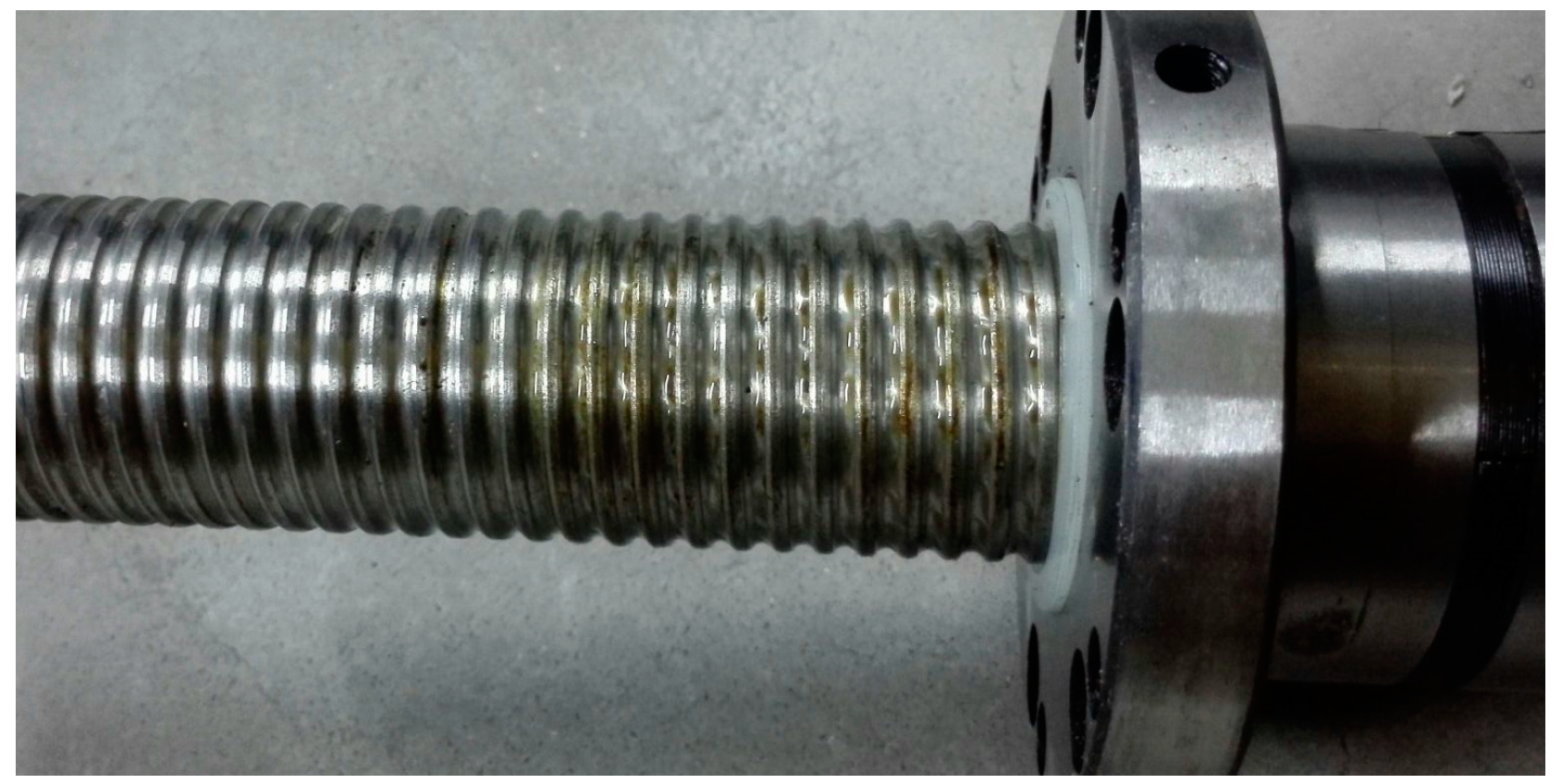

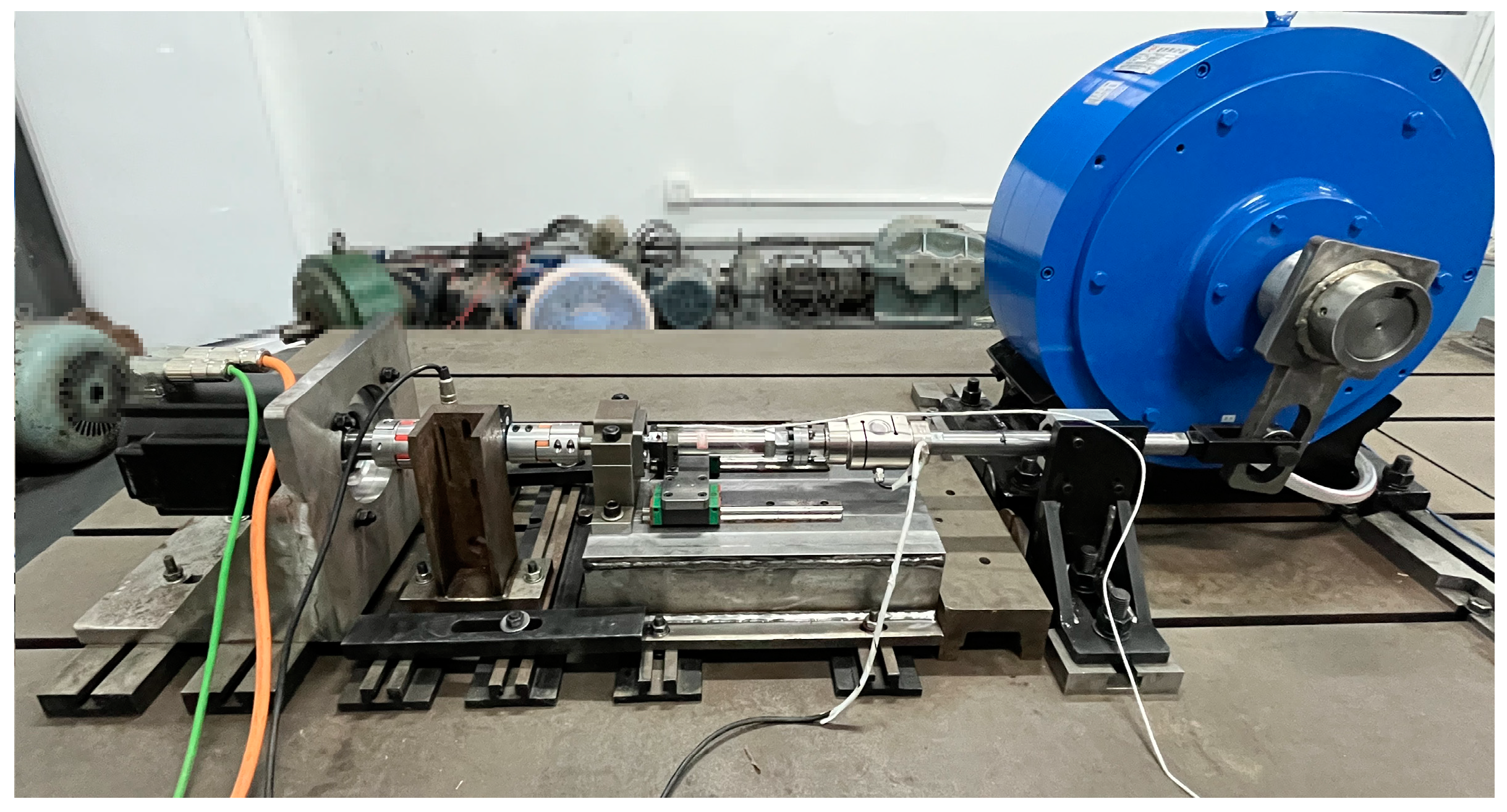

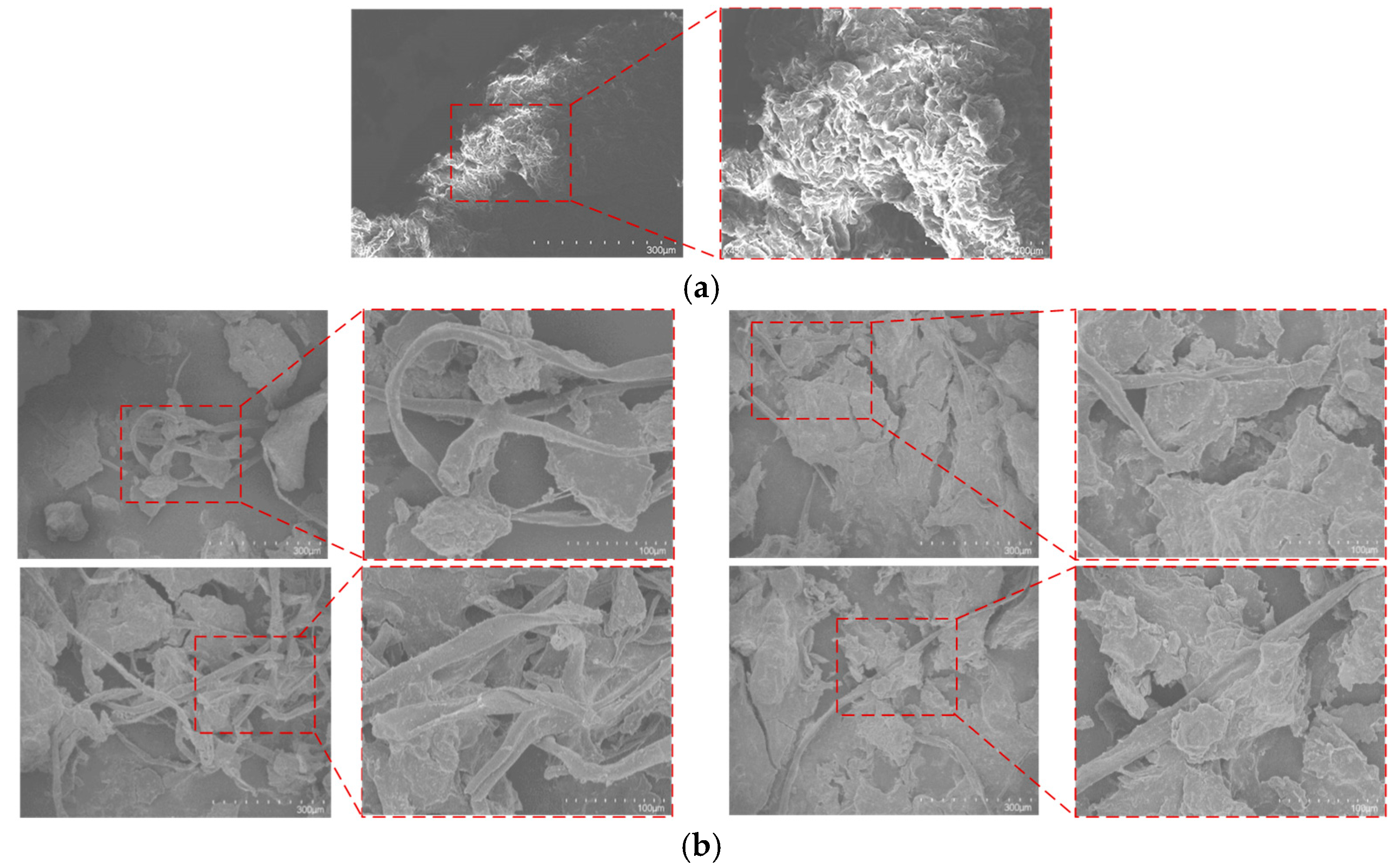

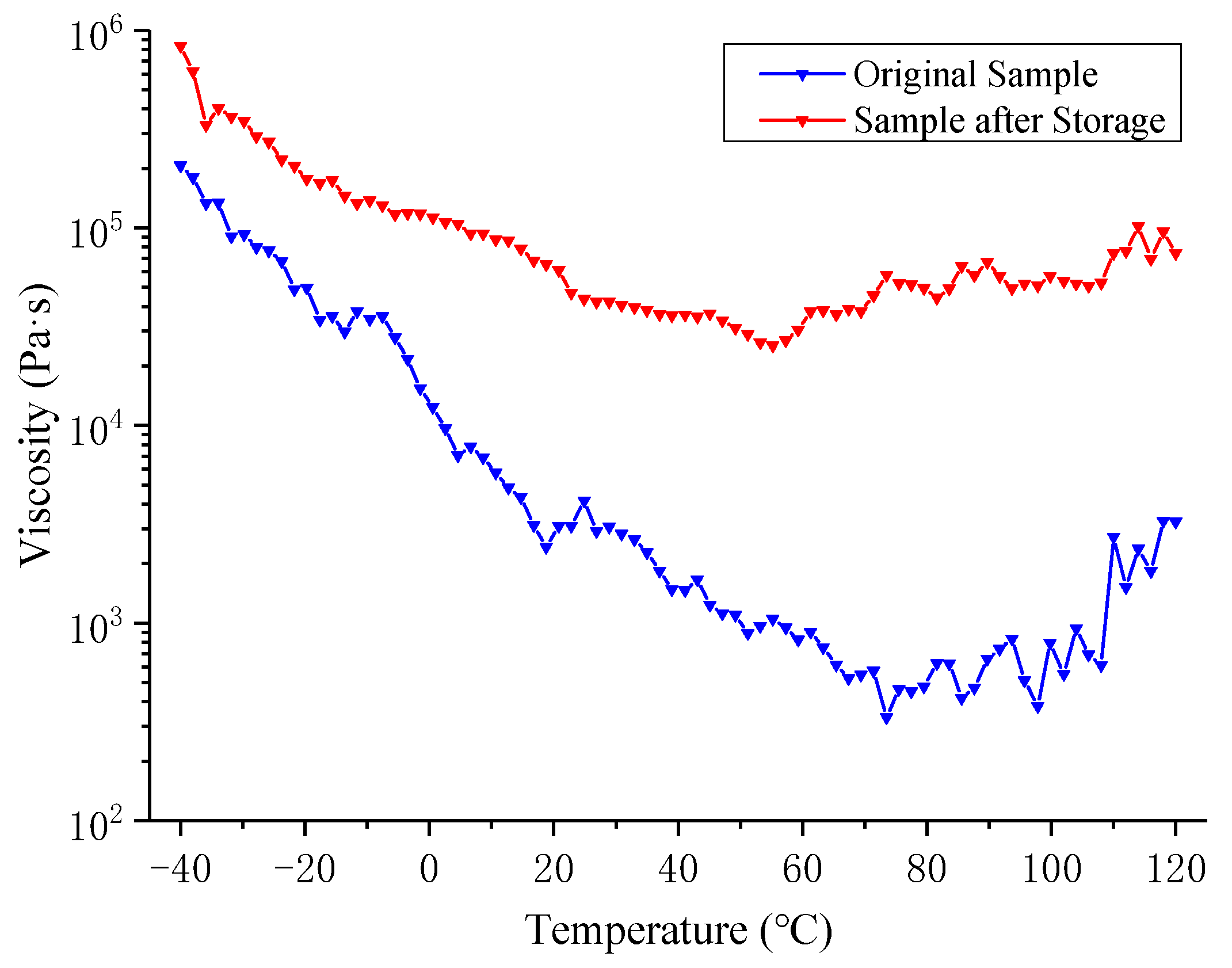
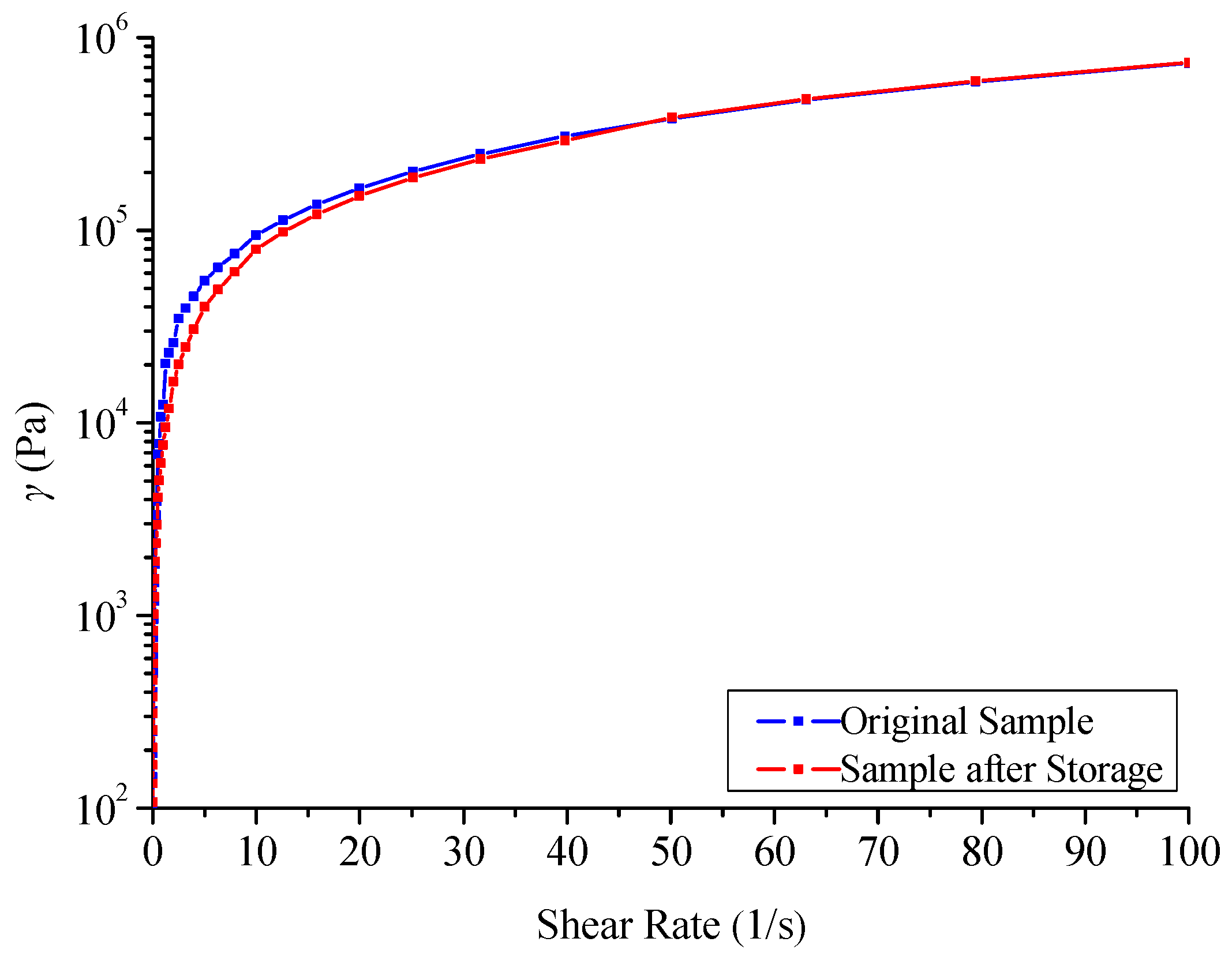
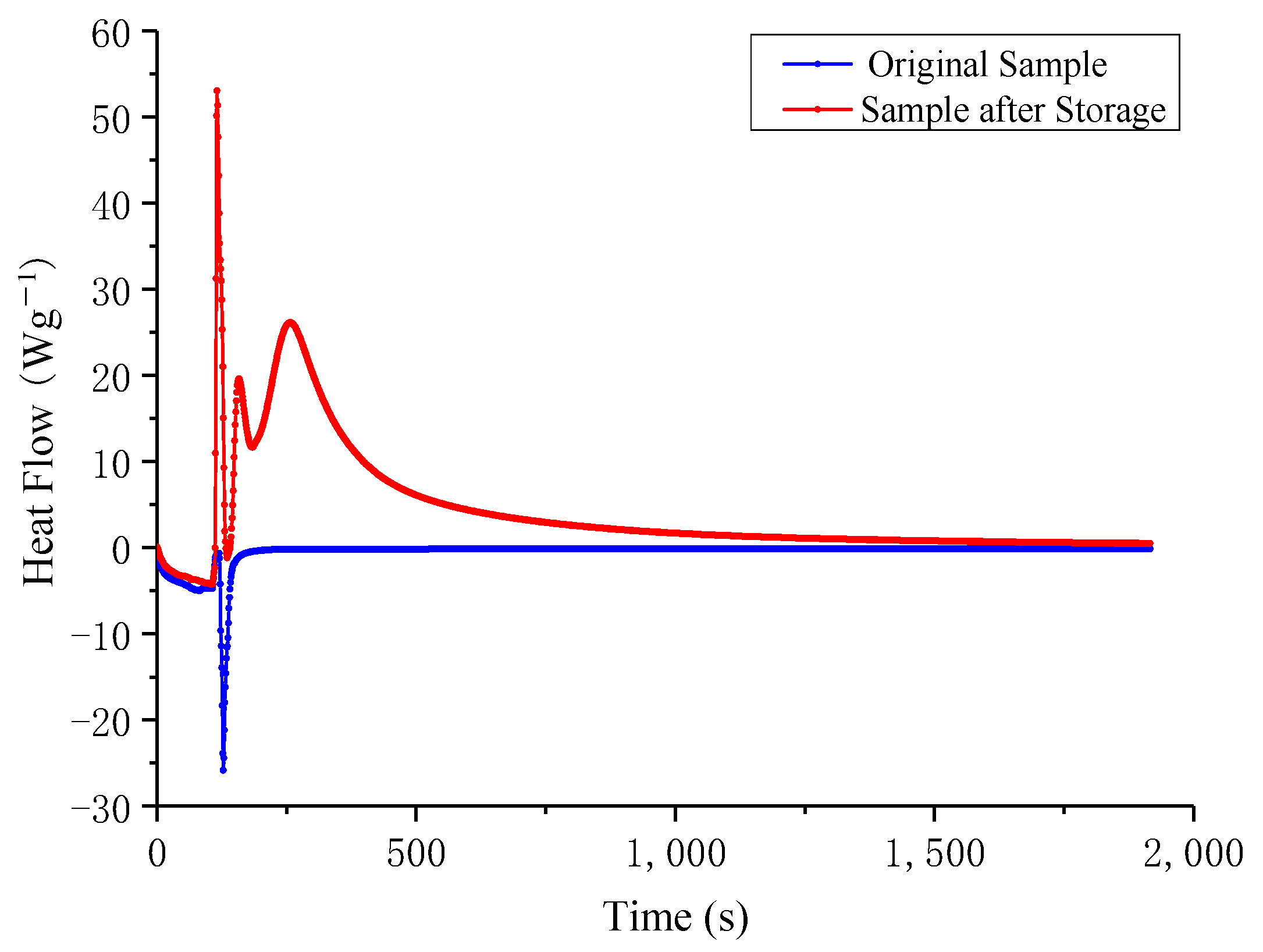
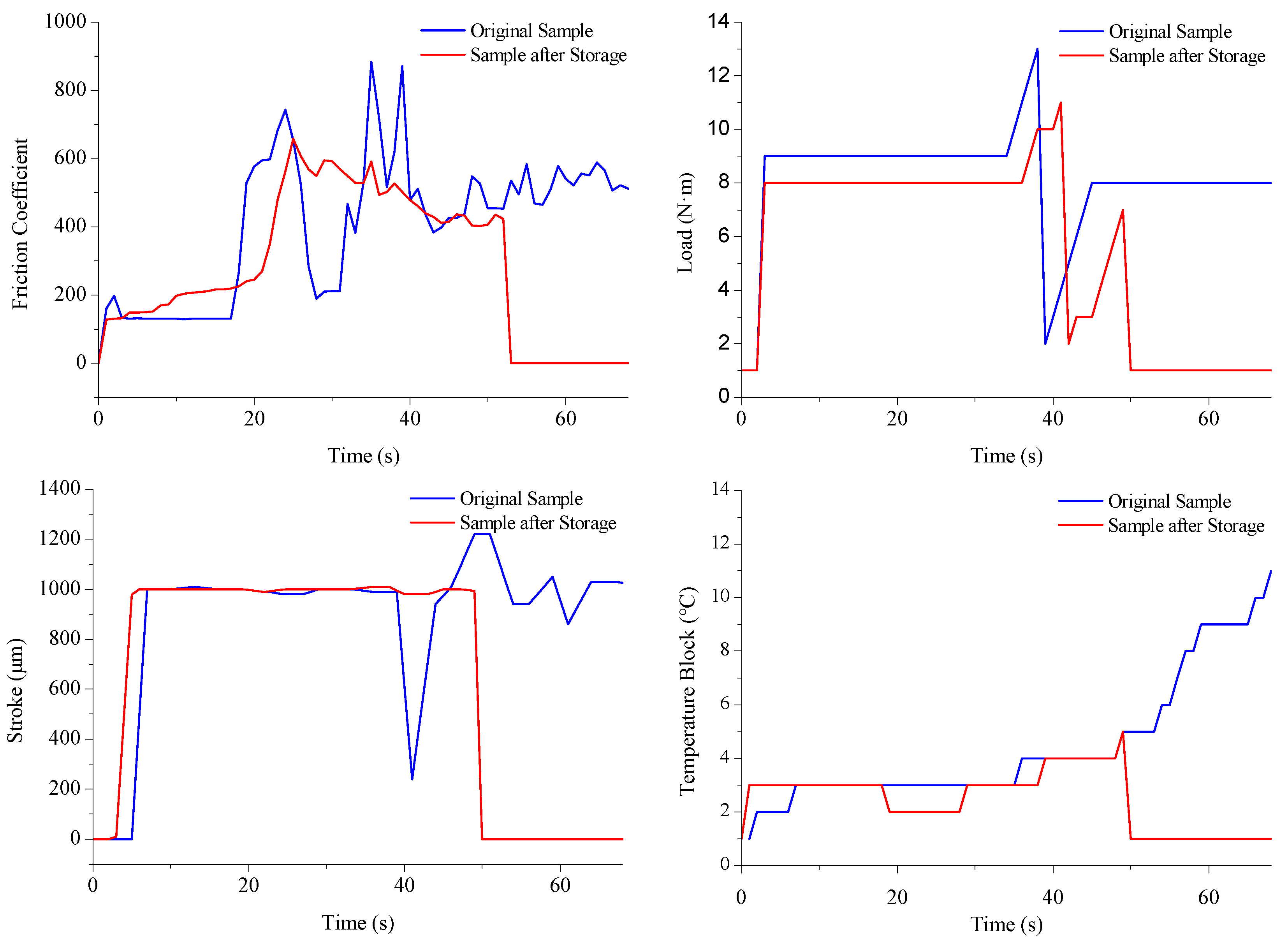
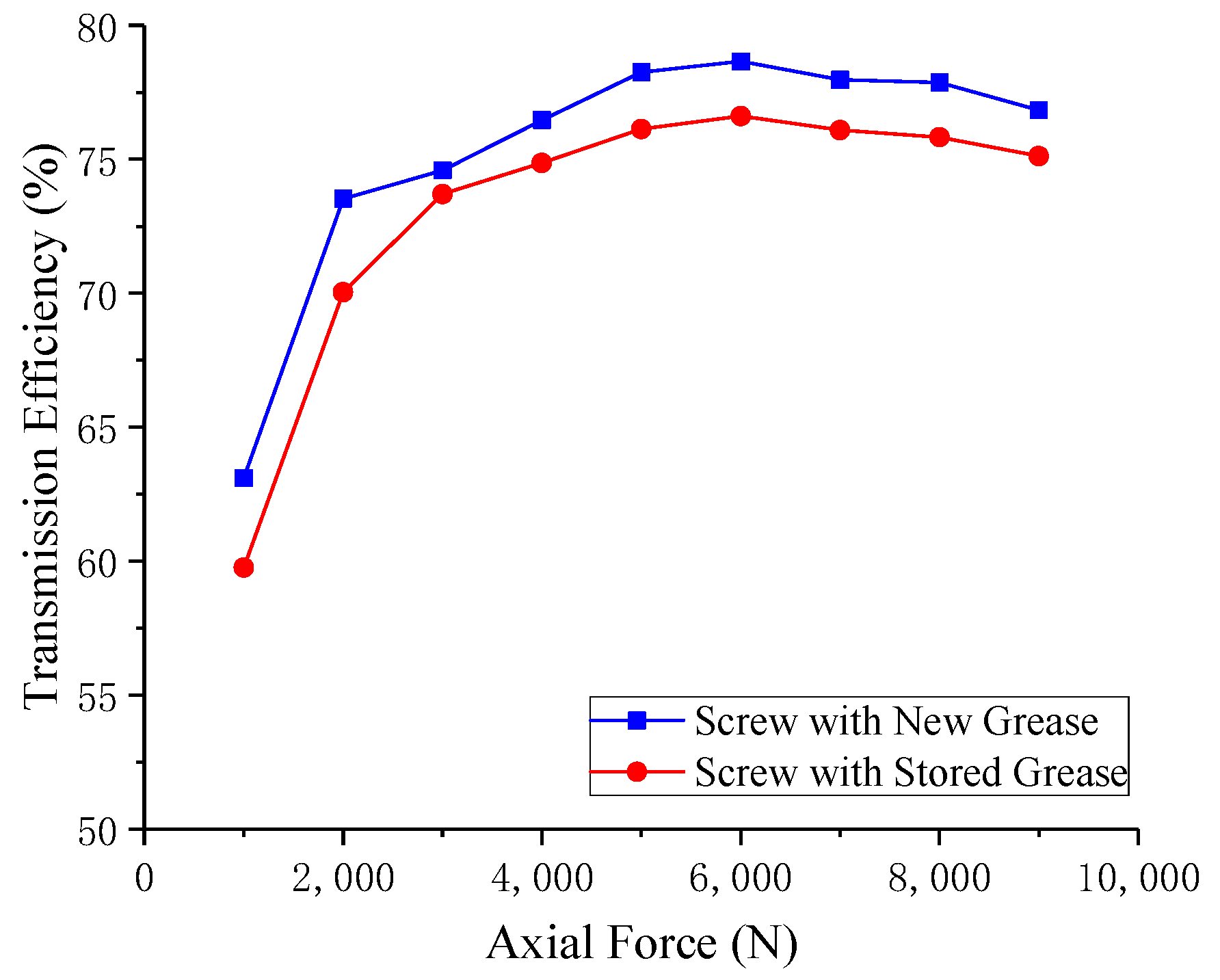
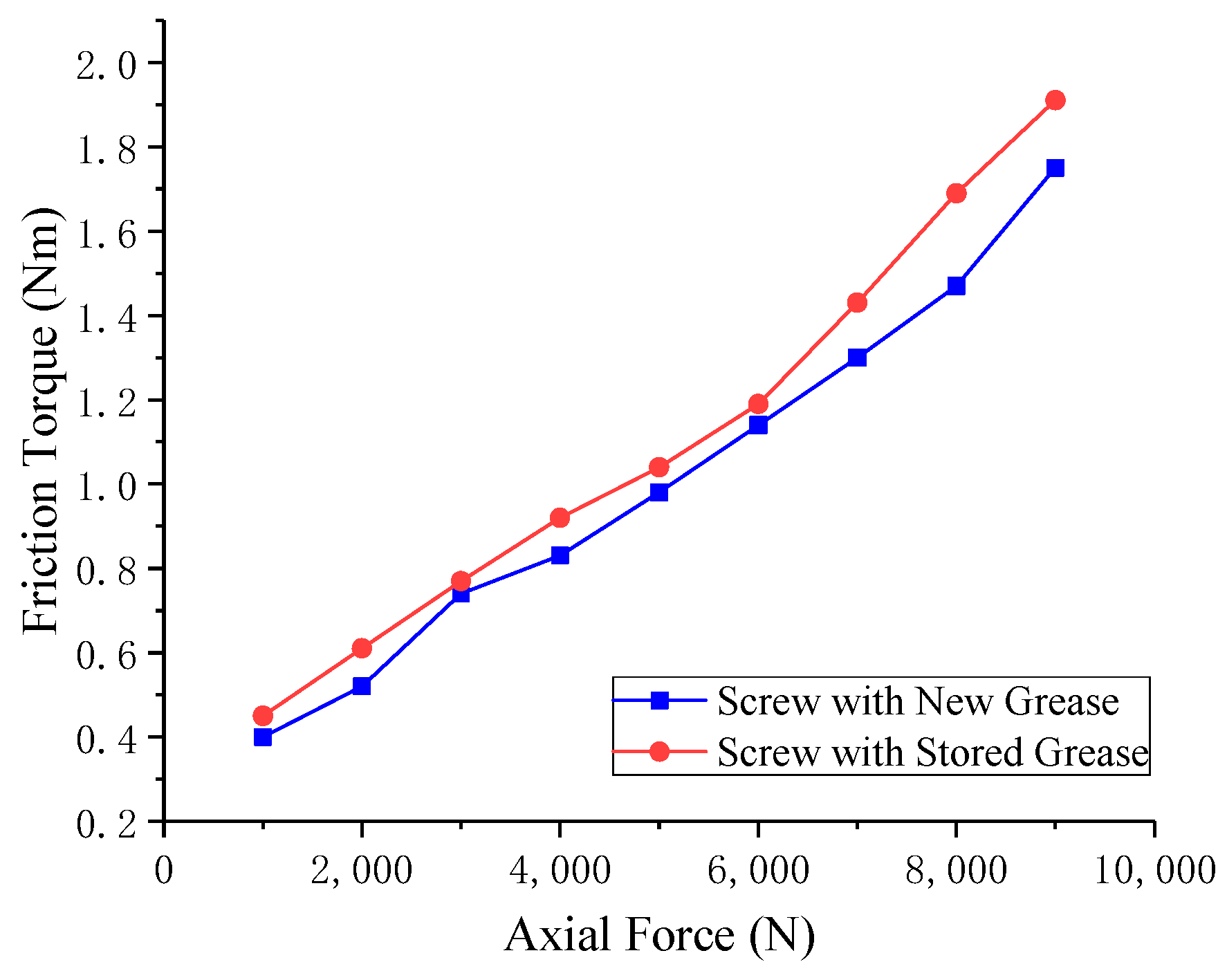

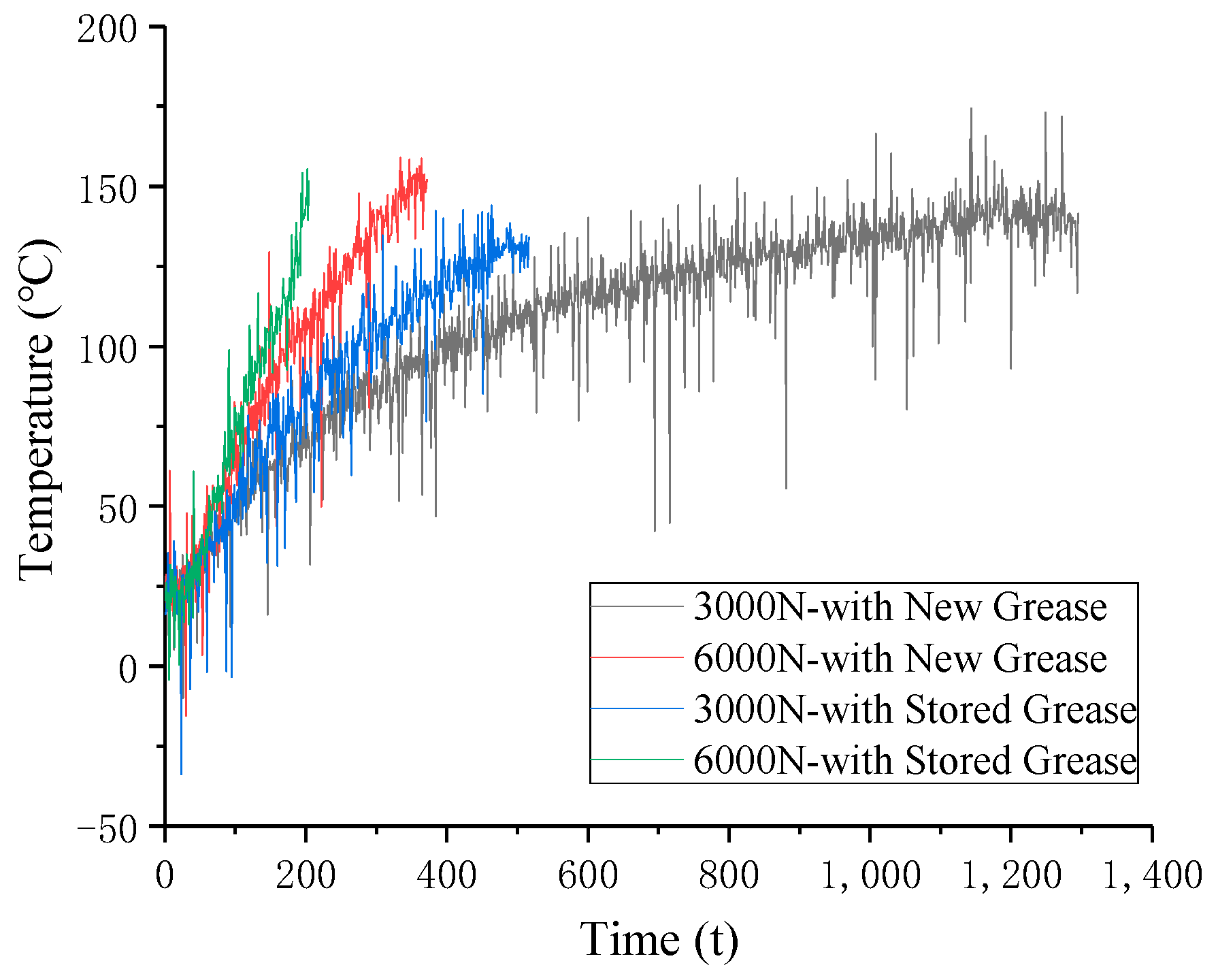
| Order Number | Project | Conditions |
|---|---|---|
| 1 | storage location | Beijing |
| 2 | placement status | lay flat and stand still |
| 3 | lubrication status | filling with lubricating grease |
| 4 | packaging status | wrapped in plastic protective film |
| 5 | air circulation status | good |
| 6 | sunshine status | no sunlight exposure |
| 7 | transportation situation | no handling |
| Testing Project | Characterized Property | Executive Standard | Sample Size | Sampling Method |
|---|---|---|---|---|
| SEM | Microcosmic appearance | JY/T010-1996 [18] General rules for analytical scanning electron microscopy | 0.1 mL | Repeat 3 times |
| FTIR | Oxidation performance | General rules for infrared analysis GB/T 6040-2019 [19] | 0.5 g | Repeat 3 times |
| PDSC | Oxidation induction time | Standard test method for oxidation induction time of lubricating grease by pressure differential scanning calorimetry SH/T 0790-2007 [20] | 0.12 g | Repeat 3 times at ten temperatures considering the loss during the transfer and weighing process of trace samples (sample loss at least twice) |
| SRV | Friction coefficient and wear resistance | Standard test method for measuring friction and wear properties of lubricating grease using a high-frequency linear-oscillation (SRV) test machine NB/SH/T0721-2016 [21] SH/T0784-2006 [22] | 1.33 g | Repeat 3 times 90% sample loss |
| Rotational rheometer | Rheological properties | General rules of rheometry for rotational rheometer JY/T 0590-2020 [23] Operational manual of RheoPlus Manuel V2.0 | 0.7 mL | Repeat twice 90% sample loss |
Disclaimer/Publisher’s Note: The statements, opinions and data contained in all publications are solely those of the individual author(s) and contributor(s) and not of MDPI and/or the editor(s). MDPI and/or the editor(s) disclaim responsibility for any injury to people or property resulting from any ideas, methods, instructions or products referred to in the content. |
© 2024 by the authors. Licensee MDPI, Basel, Switzerland. This article is an open access article distributed under the terms and conditions of the Creative Commons Attribution (CC BY) license (https://creativecommons.org/licenses/by/4.0/).
Share and Cite
Cui, P.; Hou, Z.; He, L.; Zheng, H.; He, Y.; Fan, Y.; An, L.; Huang, Y. Experimental Study on In Situ Storage of Grease-Lubricated Ball Screws. Appl. Sci. 2024, 14, 2734. https://doi.org/10.3390/app14072734
Cui P, Hou Z, He L, Zheng H, He Y, Fan Y, An L, Huang Y. Experimental Study on In Situ Storage of Grease-Lubricated Ball Screws. Applied Sciences. 2024; 14(7):2734. https://doi.org/10.3390/app14072734
Chicago/Turabian StyleCui, Peijuan, Zhanlin Hou, Luman He, Hui Zheng, Yifeng He, Yuanxun Fan, Linxue An, and Yuping Huang. 2024. "Experimental Study on In Situ Storage of Grease-Lubricated Ball Screws" Applied Sciences 14, no. 7: 2734. https://doi.org/10.3390/app14072734






